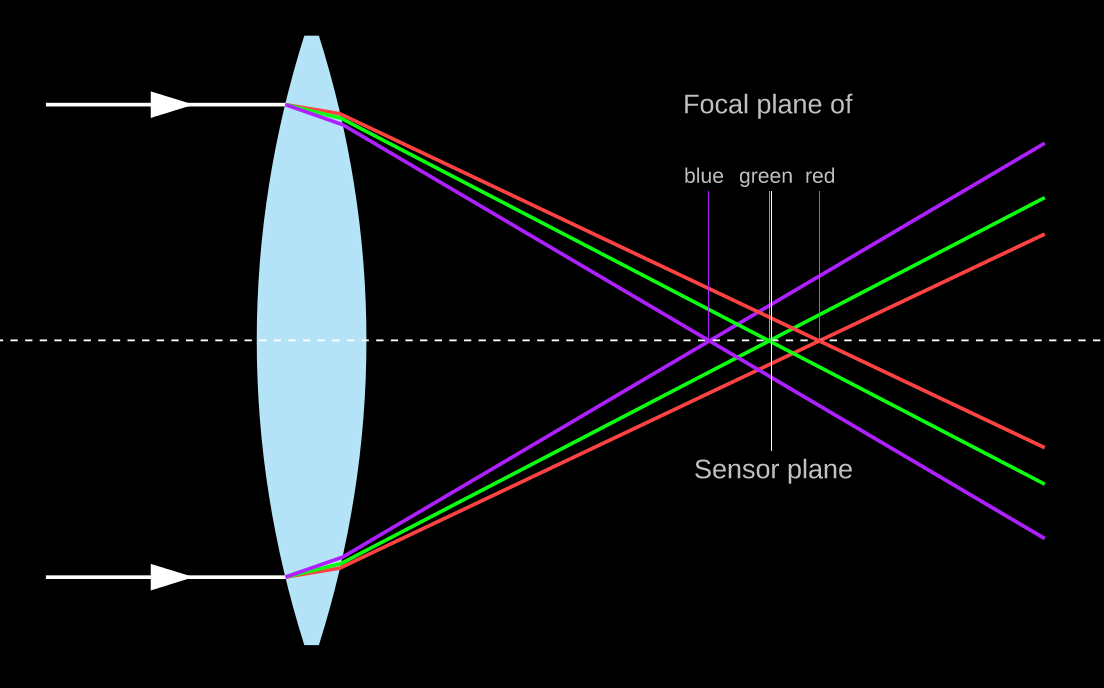Aberration
To some extend every short tube achromat exhibits chromatic aberration, CA, which is not necessarily a product quality issue, but a physical limitation. CA occurs when different wavelengths of light are focused on different focal planes. In principle, a refractor lens is a prism that requires coatings and corrections to perform as a light collector with a common focal plane for all colors. Also, the longer the focal length of a lens, the smaller the effect of CA. The typical visual effect is a blurred blueish-violet halo around bright objects, which is also referred to as 'color fringing'. Such halos can spread across an object, say Jupiter, and veil all details that the objective lens is theoretically capable of resolving. Naturally, the circumference and terminator of the moon are easy targets of CA. It is rather subjective, some people tolerate CA while others find it egregious.
Optical Path of an Achromat
 Source: Celestron LLC (modified)
Source: Celestron LLC (modified) Typical example of chromatic aberration around stars.
Typical example of chromatic aberration around stars.
Types of Aberration
After passing an aspherical convex (single) lens, light rays are bent inward. This phenomena is called "refraction" the namesake of refractors. A single, convex (curved with spherical surfaces) lens cannot converge light rays to a single point. Light rays passing through the center of a lens without converging into a single point cause "spherical aberration" that causes images to blur and showing stars as discs rather than points.
Another type is comatic aberration which occurs when an object that lies off the optical axis resulting in an egg-shaped or V-shaped, 'comet'-like flare. See the stars at the left and right quarters of the banner at the top of this page.
Chromatic Aberration is caused by the dispersion of the lens material. Since red light has a longer wavelength its focal point lies farther away from the lens than blue light which has a shorter wavelength, thus introducing color shifts that makes colors appear to bleed. See the stars in the center of the banner.
Naturally, the effect of aberration is much more pronounced at short focal ratios. Over F/10 are considered 'safe enough', but not perfect. There is no perfect lens (or mirror). Compensation or correction requires a combination of a convex (typically crown glass) and a concave lens (flint glass) forming a doublet lens (see Optical Path of an Achromat above). Often an air space between these two elements is considered a third element with corrective abilities. Special lens materials such as crystal fluorite and coatings are employed to lower the effect of dispersion. Costly refractors combine three lenses, a triplet or apochromat, performing way superior over less costly doublet achromats.


